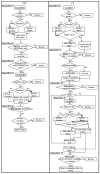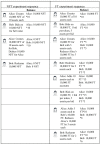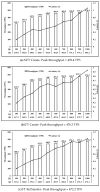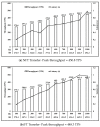Blockchain Based Transaction System with Fungible and Non-Fungible Tokens for a Community-Based Energy Infrastructure
- PMID: 34073110
- PMCID: PMC8199172
- DOI: 10.3390/s21113822
Blockchain Based Transaction System with Fungible and Non-Fungible Tokens for a Community-Based Energy Infrastructure
Abstract
Renewable energy microgeneration is rising leading to creation of prosumer communities making it possible to extract value from surplus energy and usage flexibility. Such a peer-to-peer energy trading community requires a decentralized, immutable and access-controlled transaction system for tokenized energy assets. In this study we present a unified blockchain-based system for energy asset transactions among prosumers, electric vehicles, power companies and storage providers. Two versions of the system were implemented on Hyperledger Fabric. Assets encapsulating an identifier or unique information along with value are modelled as non-fungible tokens (NFT), while those representing value only are modelled as fungible tokens (FT). We developed the associated algorithms for token lifecycle management, analyzed their complexities and encoded them in smart contracts for performance testing. The results show that performance of both implementations are comparable for most major operations. Further, we presented a detailed comparison of FT and NFT implementations based on use-case, design, performance, advantages and disadvantages. Our implementation achieved a throughput of 448.3 transactions per second for the slowest operation (transfer) with a reasonably low infrastructure.
Keywords: NFT; blockchain; demand response; fungible; peak shaving; prosumer; smart grids; trading.
Conflict of interest statement
The authors declare no conflict of interest.
Figures











References
-
- Yang X., He L., Xia Y., Chen Y. Effect of government subsidies on renewable energy investments: The threshold effect. Energy Policy. 2019;132:156–166. doi: 10.1016/j.enpol.2019.05.039. - DOI
-
- Su W., Liu M., Zeng S., Štreimikienė D., Baležentis T., Ališauskaitė-Šeškienė I. Valuating renewable microgeneration technologies in Lithuanian households: A study on willingness to pay. J. Clean. Prod. 2018;191:318–329. doi: 10.1016/j.jclepro.2018.04.199. - DOI
-
- Gautier A., Jacqmin J., Poudou J.C. The prosumers and the grid. J. Regul. Econ. 2018;53:100–126. doi: 10.1007/s11149-018-9350-5. - DOI
-
- Lantero A. US Department of Energy: How Microgrids Work (2014) [(accessed on 23 April 2021)]; Available online: https://www.energy.gov/articles/how-microgrids-work.
-
- Zhang C., Wu J., Long C., Cheng M. Review of existing peer-to-peer energy trading projects. Energy Procedia. 2017;105:2563–2568. doi: 10.1016/j.egypro.2017.03.737. - DOI
Grants and funding
LinkOut - more resources
Full Text Sources
Other Literature Sources

